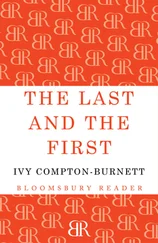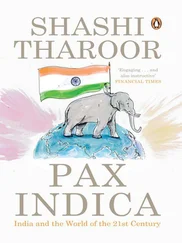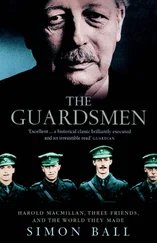Mills was the architect of another innovation, audacious in its simplicity, that lightened the load on Lyons’s clerical systems by using a new technology to make paperwork unnecessary. In 1935 Systems Research received a plea for help from the Wholesale Bakery Sales Department, which supplied bread and cakes directly to shops all over the country. They found that clerks were drowning in paper, copies of invoices and packing notes, all of which needed to be filed. By using an early microfilm camera, called a Recordak, to make the only record of customers’ orders, they were able to use the same paper order for pricing and valuation, then as a packing list and eventually to return it to the customer as an invoice, leaving nothing to file. It was the first commercial use of microfilm anywhere in the world.
Though they did not know it at the time, the questions Simmons’s young disciples in Systems Research set out to ask, and the analyses they produced – accompanied by beautifully drawn flow charts – were exactly those that would confront businesses two decades later as they grappled with the possibilities of computers in the office.
Simmons’s zeal for reform won him notice well beyond Lyons. In 1933 he became a member of the Office Management Association. A year later he was on the governing council, and by 1938 he was chairman, a post he held until 1950. The Association’s members included representatives of most of the major British industrial and commercial firms, and it regularly held conferences to discuss advances in methods and technology. Simmons, with the confidence born of absolute conviction, placed himself in the vanguard of this movement. If there was anyone in the country who had the experience and vision to recognise what computers could do for a business, it was him.
John Simmons was a hard man to convince. Here in his office were two of his most trusted lieutenants, Oliver Standingford and Raymond Thompson, babbling excitedly about an ‘electronic brain’ and asking his permission to visit a military research laboratory in the United States to find out what was going on in the field of electronic, digital computing in the aftermath of the Second World War. They seemed to think an electronic calculator might be relevant to their mission to increase clerical efficiency. Yes, he conceded, like them he had always dreamed of automating routine office work. But in 1946, with an exhausted economy and severe currency restrictions in force, it was absurd to think of buying an expensive American machine, even if such a machine existed.
Not that Simmons was opposed to the American trip itself; it had been his idea to send the two men across the Atlantic as soon as possible after the war was over to find out about the latest developments in office machines and office methods. The American office technology industry had virtually no counterpart in the United Kingdom, apart from its own licensed offshoots, and Simmons had long been used to monitoring American innovations as he developed his own approach to office management. He had made his own first visit to the United States, as a young trainee in 1925, to find out how big companies there managed their operations.
One of the companies Simmons had visited on that occasion was International Business Machines. IBM traced its origins to the invention of punched card calculators by a young New York engineer named Herman Hollerith at the end of the previous century. While working for the Bureau of the Census in Washington DC, Hollerith had invented a range of machines that could process the data from census returns by means of holes punched in cards. Hollerith’s innovation was so much faster than manual methods that it seemed little short of miraculous at the time. It received its first trial in the analysis of the 1890 US census. Clerks entered each citizen’s details on a single card, about the size of an elongated postcard, which was printed with a 40-column grid of numbers. By hitting a key on a keyboard corresponding to a particular position on the grid, the operator punched a hole in the card: the positions of the holes represented the citizen’s age, sex, employment category and so on. The stacks of cards were then fed into a ‘tabulating machine’. The machine sensed the positions of the holes through a matching matrix of spring-loaded pins, each of which completed an electrical circuit if it passed through a hole and thereby added one digit to the running total in one of the forty counters operating concurrently in the machine. Another type of machine called a sorter could arrange the cards in alphabetical or numerical order. With dozens of machines operating at once, Hollerith had a rough population count ready within six weeks, and detailed analysis of the results in just over two years. By contrast, the 1880 census, analysed with pencil and paper by almost 1,500 clerks, had taken seven years to complete.
Hollerith quickly saw the commercial possibilities of his machines, and after forming his Tabulating Machine Company in 1896 he successfully sold a number of installations to factories, insurance companies, telephone companies and other large businesses. In failing health, in 1911 he finally agreed to sell his company to a wealthy investor, Charles Ranlegh Flint, for $2.3 million. Flint merged the company with the Computing Scale Company, which made scales for shopkeepers, and the International Time Recording Company, which made the clocks that employees punched as they arrived and left their workplaces each day. The new company was called C-T-R (the Computing-Tabulating-Recording Company) and Flint appointed Thomas J. Watson Sr as general manager.
Watson had developed his consummate skills as a salesman in the aggressive culture of the National Cash Register Company (NCR). He quickly rose to the position of sales manager there, but was summarily fired in 1911 by the company’s eccentric founder John H. Patterson. On his arrival at C-T-R he immediately implemented many of the marketing and sales strategies he had learned at NCR, rapidly transforming it into a key player in the office machines business in the first decades of the twentieth century. Under Watson it was the company’s practice to lease its machines rather than selling them outright, ensuring a continuing income even in times when new customers were hard to find. It also held a monopoly on the supply of the cards. By 1924 the company had subsidiaries operating across four continents and in that year, to reflect its increasingly global impact, Watson changed its name to International Business Machines – IBM.
The following year, when John Simmons arrived from Lyons to pay a visit, the young Englishman had not found it difficult to resist the hard sell. To hire the machines and buy the specially made cards was expensive, and for the purposes of Lyons, the time and labour needed to punch the cards and feed them through the machine was not much less than that needed to do the work manually. Simmons judged the application of this technology to be of little relevance to the clerical administration of Lyons’s food manufacturing and distribution business. At that time he was more interested in extending his company’s use of manual adding and accounting machines, and in introducing the kind of office organisation extolled by American authors such as Leffingwell.
According to Oliver Standingford’s own account, when he and Thompson went to the United States in 1947 it was he who proposed that their research should include an enquiry into electronic computers. Standingford had joined Lyons straight from school in 1930 as a management trainee in the Stock Department. By that time, Simmons’s reforms had included a new system of cost accounting that included setting rigorous standards for every step in the food production chain. Everything was specified, from the value of the energy needed to bake a loaf of bread to the thickness of the jam spread on the Swiss rolls. Much of the clerical work in the Stock Department involved checking actual performance against these standards. It was a task that produced useful information for management but was short on job-satisfaction for most of the clerks who had to carry it out. Standingford had found himself supervising a section of ‘seventy calculator operators doing nothing but multiplying, adding, subtracting and writing down the answers by hand’.
Читать дальше












